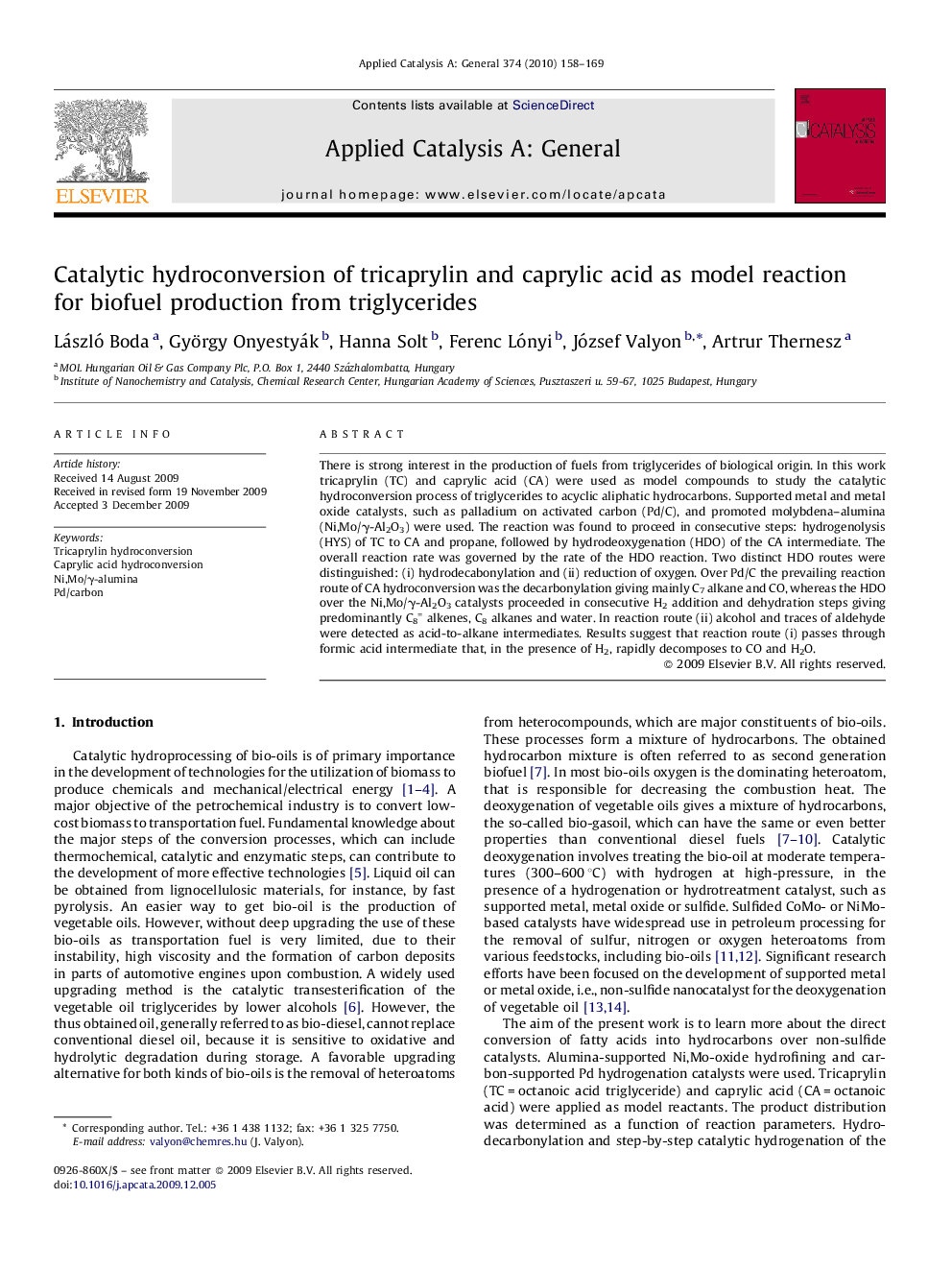| Article ID | Journal | Published Year | Pages | File Type |
|---|---|---|---|---|
| 42149 | Applied Catalysis A: General | 2010 | 12 Pages |
There is strong interest in the production of fuels from triglycerides of biological origin. In this work tricaprylin (TC) and caprylic acid (CA) were used as model compounds to study the catalytic hydroconversion process of triglycerides to acyclic aliphatic hydrocarbons. Supported metal and metal oxide catalysts, such as palladium on activated carbon (Pd/C), and promoted molybdena–alumina (Ni,Mo/γ-Al2O3) were used. The reaction was found to proceed in consecutive steps: hydrogenolysis (HYS) of TC to CA and propane, followed by hydrodeoxygenation (HDO) of the CA intermediate. The overall reaction rate was governed by the rate of the HDO reaction. Two distinct HDO routes were distinguished: (i) hydrodecabonylation and (ii) reduction of oxygen. Over Pd/C the prevailing reaction route of CA hydroconversion was the decarbonylation giving mainly C7 alkane and CO, whereas the HDO over the Ni,Mo/γ-Al2O3 catalysts proceeded in consecutive H2 addition and dehydration steps giving predominantly C8= alkenes, C8 alkanes and water. In reaction route (ii) alcohol and traces of aldehyde were detected as acid-to-alkane intermediates. Results suggest that reaction route (i) passes through formic acid intermediate that, in the presence of H2, rapidly decomposes to CO and H2O.
Graphical abstractPalladium/activated carbon and promoted molybdena–alumina catalysts were used. The hydroconversion was found to proceed in consecutive steps of triglyceride hydrogenolysis to carboxylic acid and propane, and hydrodeoxygenation of the acid intermediate. Two hydrodeoxygenation routes were distinguished: (i) over Pd/C the prevailing reaction route was the decarbonylation, whereas (ii) over molybdena–alumina catalysts the main reaction was the reduction of oxygen to get water.Figure optionsDownload full-size imageDownload high-quality image (40 K)Download as PowerPoint slide
